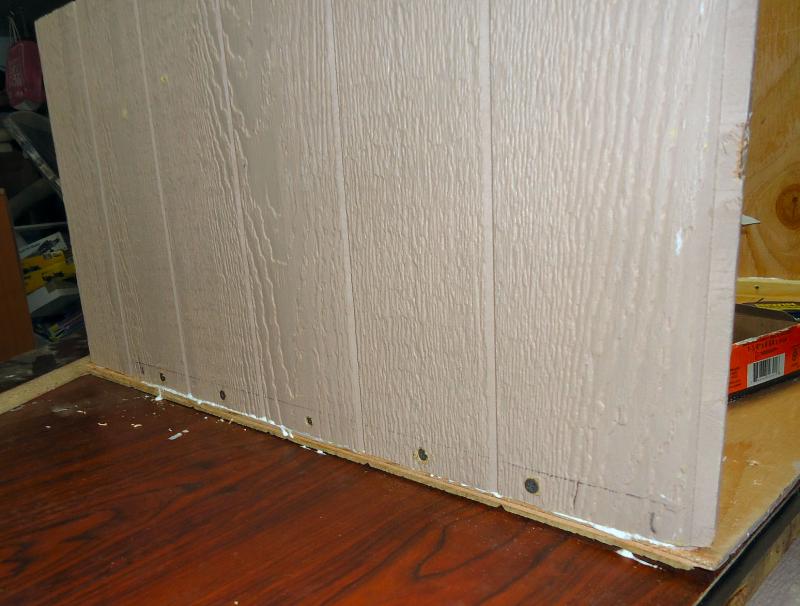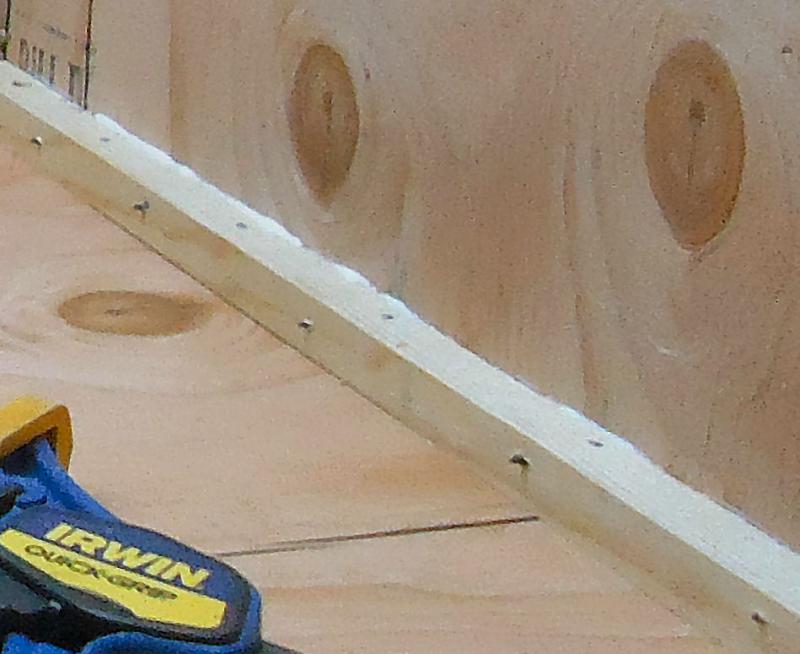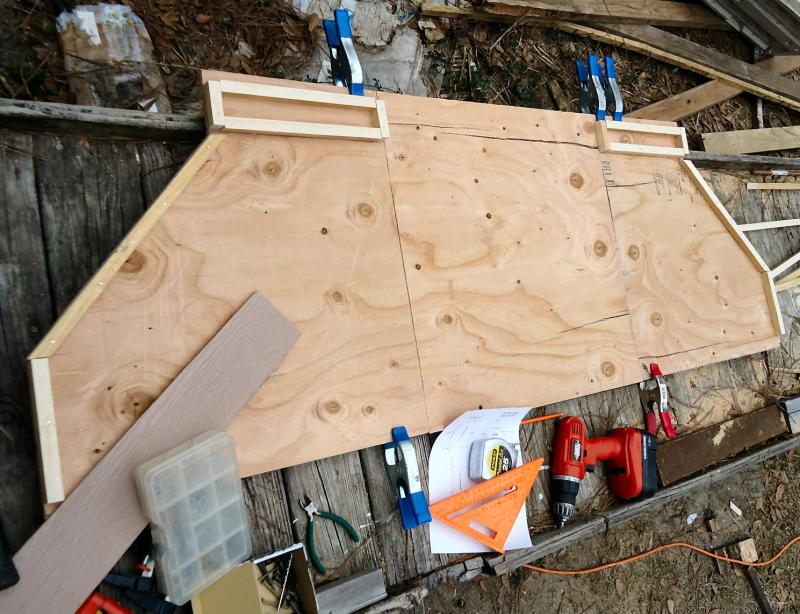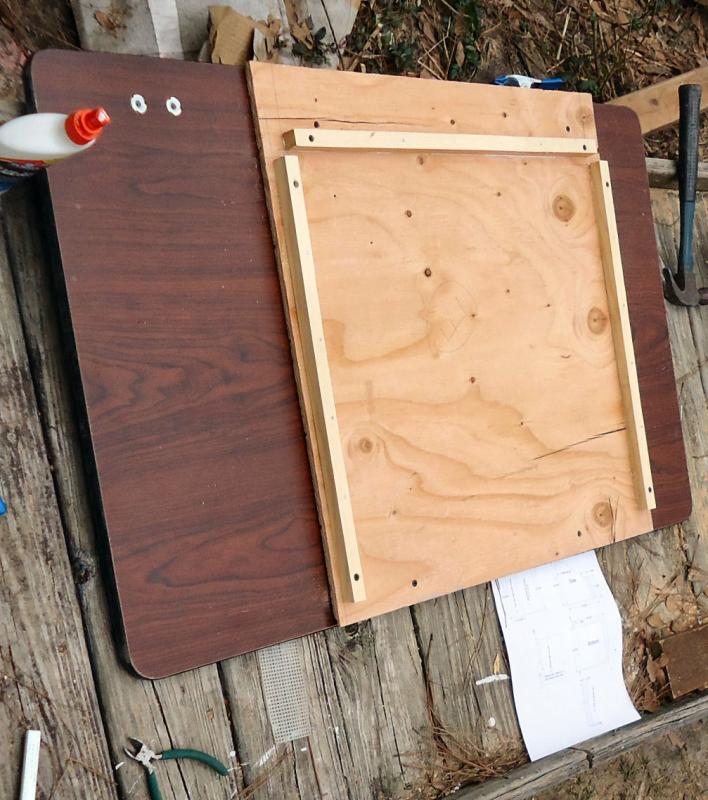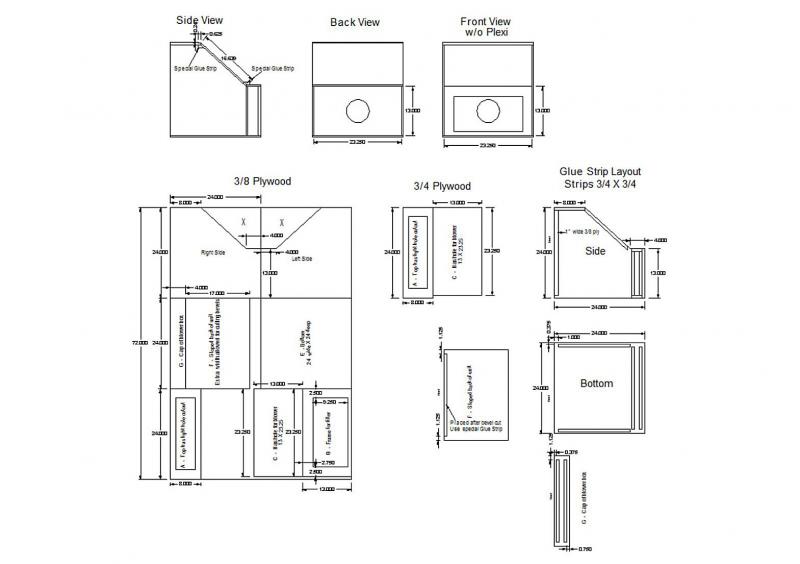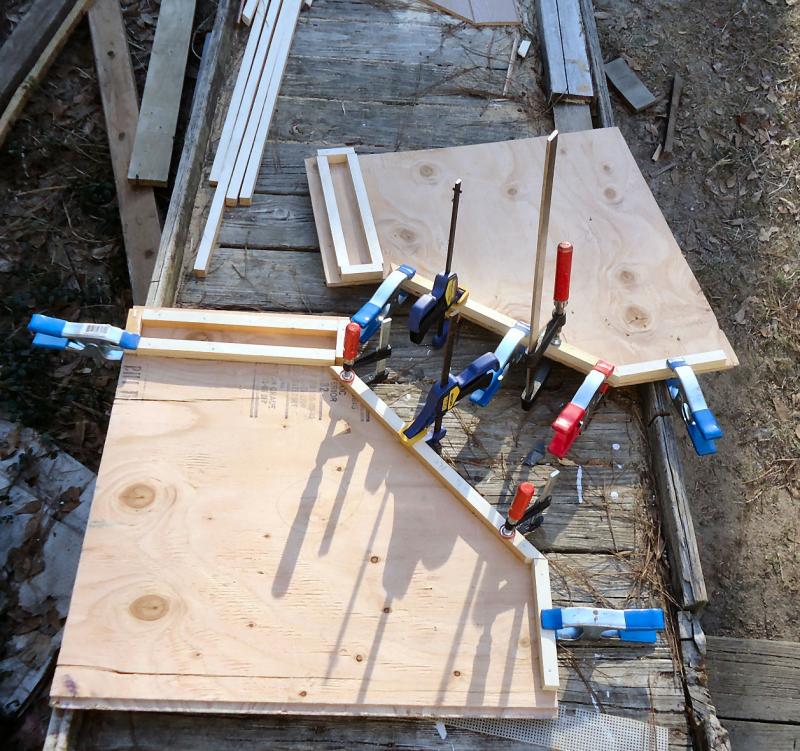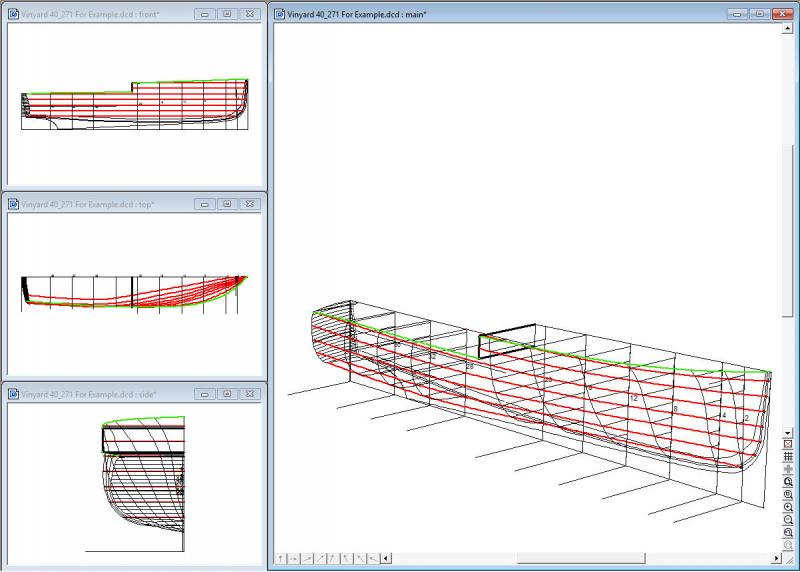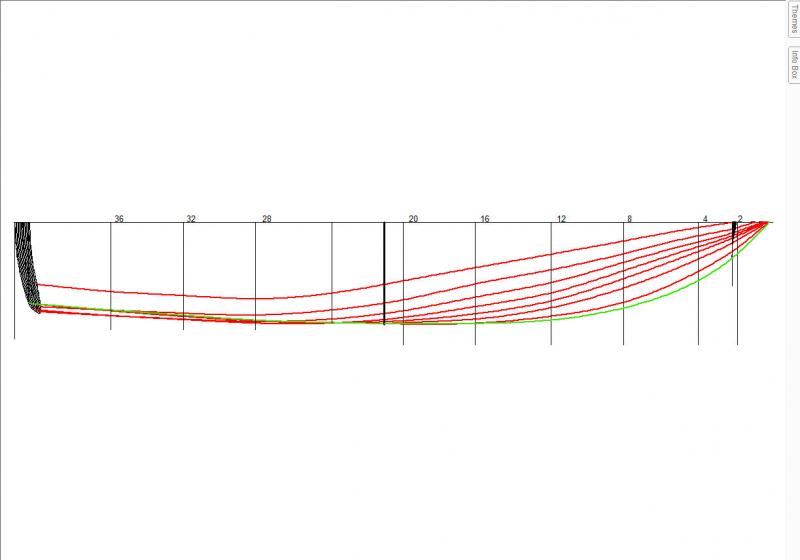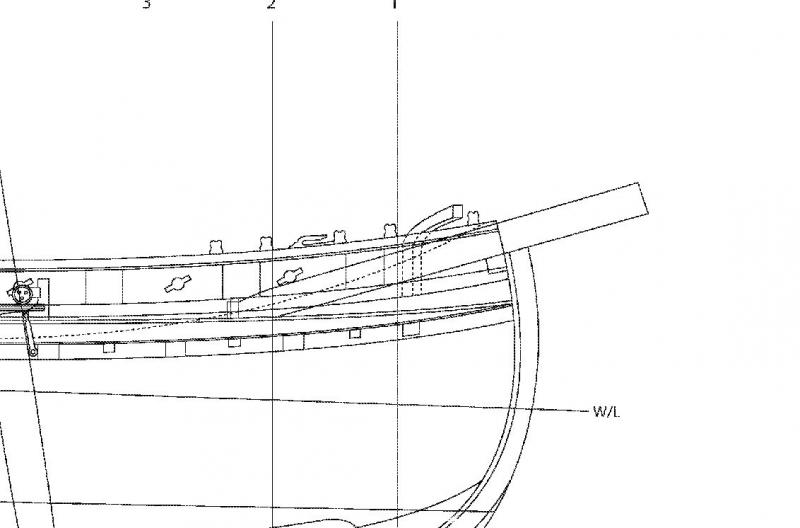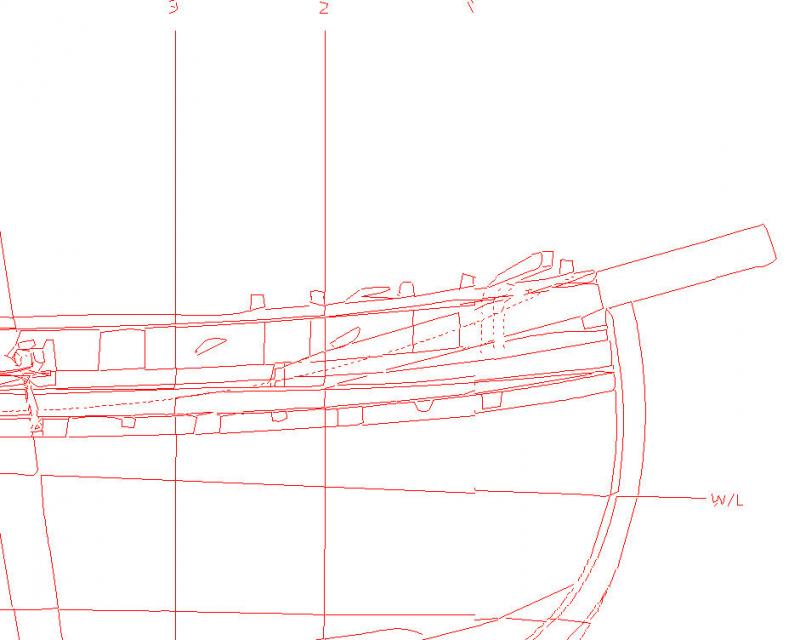-
Posts
2,932 -
Joined
-
Last visited
Content Type
Profiles
Forums
Gallery
Events
Everything posted by thibaultron
-

My Spray Booth Construction
thibaultron replied to thibaultron's topic in Modeling tools and Workshop Equipment
Kurt; If I find that the suction is too great, I'll either sell that blower, and buy a smaller one, or build a new booth the full 39" width of the table. The construction has not been too bad thus far, other than lugging my heavy 10" miter saw in and out of the shop. This booth was built with mostly stuff I had around the shop, but a bigger one should not cost more than $50, with the ply and 1 X 6 board for the glue strips. One thing that I am going to add, after viewing another booth build on YouTube, is a cover for the front, when I'm not using the booth. It will keep the dust out between uses. -

My Spray Booth Construction
thibaultron replied to thibaultron's topic in Modeling tools and Workshop Equipment
2/19 Today I glued the sides onto the bottom of my spray booth. Before I start, for my mother should she ever read this. Yes, shop horrible mess, you raised me better, suitably ashamed. Sorry. :-) I started out dry fitting them. The filter frame will not be glued in today, but it is being used as a jig to keep the sides square, and correctly oriented front to back. It is tight against it's glue strips which are already attached to the sides. I disassembled the parts and marked the bottom of the sides for where the long strips mated to it. Then I drilled 1/16th pilot screws through the ply. The purple paint was put on by the lumberyard. The panels were damaged, so I got them for 70% off. The paint is how they indicate to the cashier that this is the case. The damage was to the lap joint notches, so didn't affect this use. After putting the side and frame mount back in I installed the screws. Starting in the middle, due to warp in the plywood, I drilled the pilot holes through the glue strips and ran in the screws. Then, naturally I installed the other side. I found that both sides bowed in, so I had to clamp the filter mount in firmly, and put a screw in to hold it in place. I mistakenly installed the glue strips at the back of the booth to the side pieces, so I couldn't put screws in from the bottom, with everything screwed to the table. I used my two long clamps to hold those two joints tight to the bottom. Tomorrow, I'll remove it from the table, put in screws, and reattach it. One side at the back was twisted in, so I clamped it from the side, another reason the two glue strips should have been attached to the bottom first. The strips and ply come out to 1 1/8" thick, and my screws are 1 1/4" long. When I'm done, I'll go back with a motor tool and cut the ends flush. -

My Spray Booth Construction
thibaultron replied to thibaultron's topic in Modeling tools and Workshop Equipment
2/18 Today I glued the corner strips to the bottom of the spray booth. The booth will ultimately reside on a table with casters, so I can move it around. I have an old table top, that will be used for this. As I mentioned before the plywood is warped. I don't have deep enough clamps to get to one of the internal corners. So I decided to screw the bottom to the table top, in the position it will be at. This flattened the ply. In addition I temperarily screwed the corner pieces down also. I'll remove all the screws when I go to assemble the booth. Here is the bottom screwed to the table. I'm left handed, thus the offset to the right. The left hand area will be for storage of the airbrush equipment. Next I laid down the sides in alignment with the bottom, so I could position the internal corner pieces correctly. Then I glued and screwed the pieces in place. I found that even with the bottom piece screwed to the table, the screws in the corner pieces were needed to get them to lay down without a gap. Here's the bottom finished as far as I want to go for now. I still have to put in the piece for the bottom of the blower bulkhead, but I'm going to do that after the sides and bottom are assembled. Less chance of having it in the wrong spot, if the sides are not perfectly aligned. A good seal here is essential. I stopped here to let the glue dry overnight. -

My Spray Booth Construction
thibaultron replied to thibaultron's topic in Modeling tools and Workshop Equipment
2/17 After going over my drawings one last time, and finding a few errors, I started construction on my Spray Booth. I've cut out all the plywood, and ripped a 1 X 6 into 3/4" strips. The strips are for the corners, to strengthen the joints. Here is a picture of the sides, with the strips glued and nailed on. The ply is warped a little, so all the clamps are to hold the glue strips on solid, until the glue dries. I'll let them sit overnight, and do the rest tomorrow, when I the clamps are free. The glue strips are sitting over at the left of the ramp. The rectangular arrangement of strips are for the filter mount and blower bulkheads. Most of the case is 3/8" ply (I would have preferred 1/2", but I had the 3/8"). The blower bulkhead is 3/4", as I felt the 3/8" was too thin for this. The notch on the larger end of the one side is a lap joint in the plywood. The ply is 3/8" exterior siding. -

My Spray Booth Construction
thibaultron replied to thibaultron's topic in Modeling tools and Workshop Equipment
2/16 After looking at a few spray booths, and plans, here is what I'm planning on building. The top has a cutout for a light, I'll put plexiglass in the opening. The top hinges up so I can have more access to the top of the model, or to clear masts, if needed. The front lip will also be a plexi piece. I think I'll use plastic wrap as an inside cover to both clear parts. I can strip it off and replace it, when it gets coated. -

My Spray Booth Construction
thibaultron replied to thibaultron's topic in Modeling tools and Workshop Equipment
2/15 Today I had an epiphany. I've been shopping around for a fan to use in a spray paint booth. I'm going to be using acrylic, so "explosion proof" is not a neccessity, even if I could find one. The internet sites say 500 CFM. Seems a bit high, but start there So, I've been looking at the squirrel cage type with the motor outside the case. Non explosion ones on Ebay with ~150 CFM go for about $60 US. I next thought of using an old dryer blower and motor. Used driers are about $100. I stopped and asked about broken ones at the local places, $35 or more. Then I remembered the old electric leaf blower that has been dragging around my shop for 6 years, that my wife bought at a yard sale. Squirrel cage, motor outside the blower housing, and lots of CFM. I think I have a volunteer!! I'll probably end up building an outside box to house it, to cut down on the noise, but for now construction can begin. After some discussion, about 500 or 600 CFM being way too much flow, I found a 250 CFM blower on Ebay, and bought that. The leaf blower idea, though, did get me moving on construction. 2/15 The trouble with the regular hood and bath fans is that the motor is in the air stream, and the vapors (if solvent type) can deteriorate the insulation. The squirrel cage hood fans run about 30 to 50 CFM, too low. You can get new SC fans with about 130 CFM for $60, but if that is not enough, I've wasted the money. The leaf blower is rated 600 CFM. If that is too much I can ramp it down, to find the right value. A 500 CFM new fan runs about $150. A drier runs about 130 also, if I can find a free one, I can try that later. -
Started a new thread about the construction of my spray booth. I started detailing it on the “What have you done today” thread, but figured that that was to much info to clutter it with. I’m going to put the earlier postings in with the date I posted them, then continue in this thread. So the beginning may be somewhat choppy, stick with me.
-
Out to the shop to find some scrap hardwood!! Thanks!
-
Nice setup for the mast drilling, think I'll use that setup.
- 449 replies
-
- sultana
- model shipways
-
(and 2 more)
Tagged with:
-
The only solution I personally have been able to do to fight this, is to specify "North America" only on my Ebay searches. Doesn't solve much of anything, but at least blocks them from one customer.
-
In the model railroad world, there is a standard, open source, program, universally used in programming the digital locomotive controllers, of all brands. Some SOB programmer copied the code, changed a couple areas, and copyrighted the whole thing under his name, then sued the open source group for infringment!! it took a couple years and a lot of bucks, to get it overturned.
-

Fokker Dr.I by Torbogdan - FINISHED - Model Airways
thibaultron replied to Torbogdan's topic in Non-ship/categorised builds
Yes, call them. -
The other question is, even if we can find the orentation of the wreck, how long did she drift after being cut loose, did she drift? They would have cut her loose well before she endangered pulling the Washington down with her. With being down a the bows, the wind would have pushed the stern downwind, as she sank.
- 30 replies
-
- philadelphia
- diorama
-
(and 3 more)
Tagged with:
-

workshop floor material
thibaultron replied to davec's topic in Modeling tools and Workshop Equipment
Epoxy finishes are the standard for garages. Mix two parts and spread like paint. That would be my choice. The problem I can see with laminates is moisture buildup between the floor and the laminate. I doubt that there is a vapor barrier under the garage floor. Under the house proper they generally do have one. -
Yes, the accuracy of CAD can be to distracting, sometimes. I draw my plans out full size, then reduce them for printing. I have to keep reminding my self, that no one built a wooden ship to 0.001 inch accuracy! I leave the CAD set at 0.001", just because I do make some drawings that need it, and I'm sure I would forget to change it back and forth.
-
Here is an example of a 3D drawing of a boat I am doing. The plans showed the frames forward of the break fairly accurately, but the drawings of the aft frames were garbage. By drawing everything in 3D I was able to work down to these final lines, by taking what accurate data I could find in other sections of the plans, and adjusting the aft frames over several iterations. By doing this I can also readily see that all the lines are fair in all 3 projections. I used a function of my CAD that draws a curve between several points. If all my data is good I get smooth lines. If not, I can see what points are out of line. Then I redraw the line, skipping the bad point(s). Now if the lines is good, I can take measurements, and redraw the frame(s) with the new data. I can also select each window, and make it full screen, to see finer detail.
-
As an example, I took a section of a plan showing the drawing imported as a graphic, and the traced results. (Yes a publicly distributed plan). The drawing shown is fairly course, I normally scan the plans in at 300DPI. As you can see, the traced drawing is not in any case, in any way useful. This is the type of result any of the Tracing programs, free or purchased, will give you.
-
On a safety note, for those who don't know: Never use oil or grease of any kind on or around the O2 bottle threads!!! Learned this in a welding class. The teacher said it would go Boom!
- 749 replies
-
- albertic
- ocean liner
-
(and 2 more)
Tagged with:
About us
Modelshipworld - Advancing Ship Modeling through Research
SSL Secured
Your security is important for us so this Website is SSL-Secured
NRG Mailing Address
Nautical Research Guild
237 South Lincoln Street
Westmont IL, 60559-1917
Model Ship World ® and the MSW logo are Registered Trademarks, and belong to the Nautical Research Guild (United States Patent and Trademark Office: No. 6,929,264 & No. 6,929,274, registered Dec. 20, 2022)
Helpful Links
About the NRG
If you enjoy building ship models that are historically accurate as well as beautiful, then The Nautical Research Guild (NRG) is just right for you.
The Guild is a non-profit educational organization whose mission is to “Advance Ship Modeling Through Research”. We provide support to our members in their efforts to raise the quality of their model ships.
The Nautical Research Guild has published our world-renowned quarterly magazine, The Nautical Research Journal, since 1955. The pages of the Journal are full of articles by accomplished ship modelers who show you how they create those exquisite details on their models, and by maritime historians who show you the correct details to build. The Journal is available in both print and digital editions. Go to the NRG web site (www.thenrg.org) to download a complimentary digital copy of the Journal. The NRG also publishes plan sets, books and compilations of back issues of the Journal and the former Ships in Scale and Model Ship Builder magazines.





